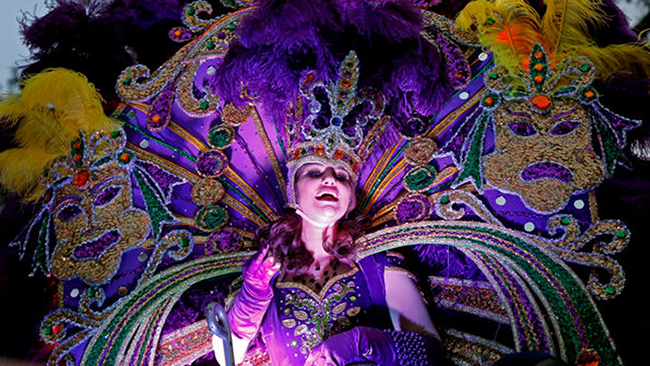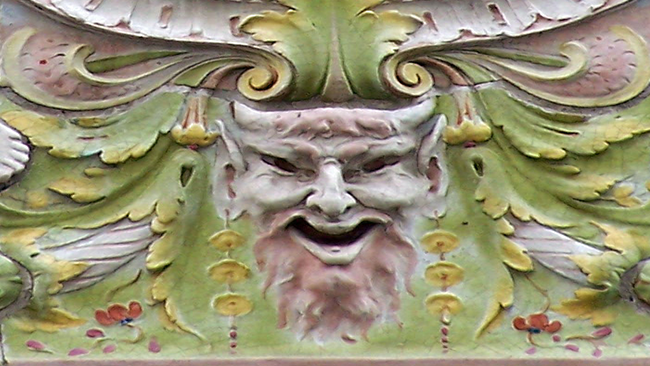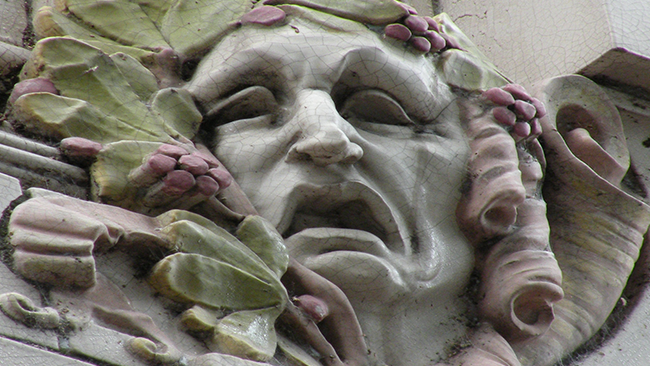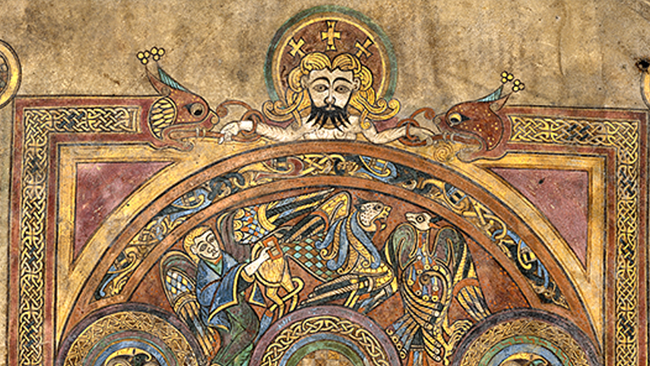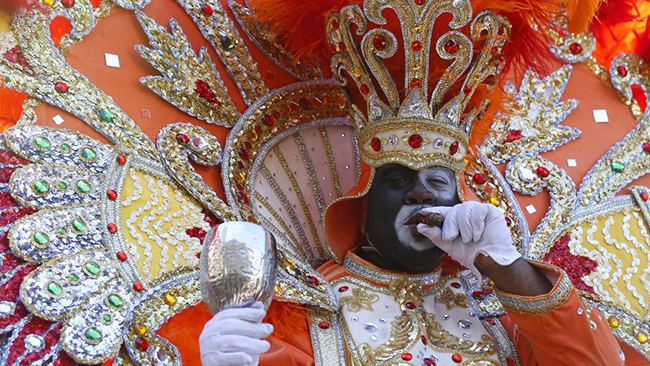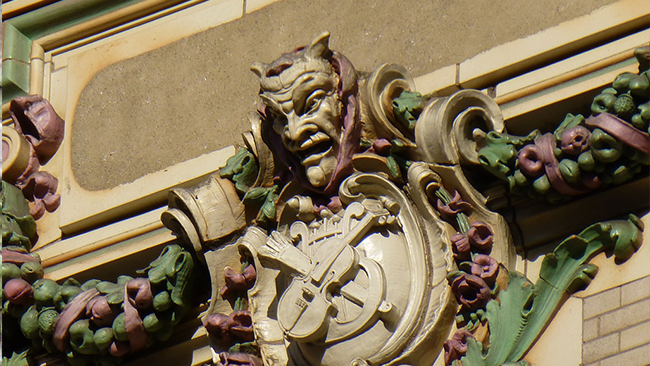“I’ve seen a thousand faces fade”
Our brains have a section—the fusiform gyrus—dedicated to recognizing faces.
In Light Sonata, extraordinary faces appear again and again like themes in a sonata: carved faces on the facade at the Orpheum; the face of the devil at Mardi-Gras; the face on the Page of Iona (like a page from the Book of Kells); the face on the proscenium at the Orpheum; the face of Mennie in a dream, surrounded by peacock-like feathers.
To develop this theme, Baxter tells Charlie about how he discovered how pain in a phantom limb could be real—a hand-t0-face connection—a story that suggests the source of Rupert’s pain (the face of his sister) can become the source of his healing (his hands, to play brilliantly).
Baxter also shows Charlie the gynostemium (the sex organ) of the rare telipogon diabolicus―the devil’s face in the orchid―as another healing metaphor for Charlie: the translucent petals can “hold the light beautifully,” even with a diabolical center.
And when Rupert stands beneath the stage, his point of no return, he sees a giant face as a mask under him―a dark symbol lying in his subconscious: Is he going to succumb to the trauma or rise, literally, to the performance?
And Baxter writes in a poem: “I’ve seen a thousand faces fade / And so begins a journey toward completion . . . ”
What if our brains kept seeing a horrific face over and over, like a film reel on auto-replay?


